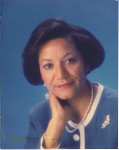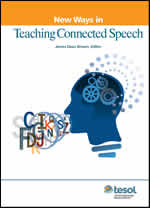Lesson Plan: Creating a Reading Journal
by Sarah Sahr
 So many of us understand the joys of getting lost in a really good book. One of the highlights in my teaching career is watching students get lost in a really good book. Sadly, due to standards and curriculum, rarely do we find time to allow our students to simply read for pleasure. Below, I have created a basic reading journal (.docx) to help students put to words how they react to different parts of a story. This reading journal is made for students who read fiction. You could try using it with nonfiction, but explaining some of the literary elements might get complicated.
So many of us understand the joys of getting lost in a really good book. One of the highlights in my teaching career is watching students get lost in a really good book. Sadly, due to standards and curriculum, rarely do we find time to allow our students to simply read for pleasure. Below, I have created a basic reading journal (.docx) to help students put to words how they react to different parts of a story. This reading journal is made for students who read fiction. You could try using it with nonfiction, but explaining some of the literary elements might get complicated.
| Materials: Reading journal (.docx) |
| Audience: Intermediate Adult or Secondary Students |
| Objective: Students will be able to document their reactions to a piece of fiction. |
Journaling Preparation
In getting students ready to start journaling, it would be best to help students find a book they will actually enjoy. However, if your class is reading a novel together, feel free to use this journal. Everyone will need a copy of the journal. I would suggest having students create a title page. The title page should include the book’s title, author, year published, publisher, student name, and a due date. To make the title page more appealing, a student could draw a picture, but it’s not necessary. Once everyone has a copy, go through the journal page by page to make sure everyone knows what’s expected of him or her. Here’s a brief outline:
Pages 1–2: Reading Log
It is important that each time students sits down to read their books, they document what page they are on. This is required so students don’t lose track. You could also hand out bookmarks, if you have enough.
Pages 3–4: Word Log
Like with all new books, there are bound to be words students don’t understand. Take a moment to explain context clues. Encourage students to make definitions of their own. As a last resort, students can use a dictionary to look the word up. Under no circumstances should students use a translating dictionary.
Page 5: Questions
As students read through the wonderful pages of their book, they are bound to have questions. If a question arises, the students should immediately write it down in their journal (including page number). As students continue to read, their questions might be answered. If possible, students could write the answer in the question box, but only if the answers become available as they read the story.
Page 6–7: Plot Changes
Here is where some time should be taken to explain literary elements to students. Here, questions are used to indicate definitions for the elements. This may not work for your students, but it might give you a starting point:
- Setting: Where is most of the story taking place? Is there more than one location? List them.
- Characters: Who are the people in your story? Are they human? If not, what are they?
a. Protagonist: Who is the “good guy”? Is there more than one?
b. Antagonist: Who is the “bad guy”? Is there more than one?
- Narrative Hook: What was the one event at the beginning of the story that forced you to read more? Was it more than one event?
- Conflict: What’s the problem the characters are facing?
- Rising Action: What are the events that move the story along? Are there any major events?
- Climax: What happens near the end of the story that changes the characters forever? What happens after that?
- Resolution: How is the conflict resolved? Did all characters get what they wanted?
- Point of View: Who told the story? Did he or she do a good job?
Page 8: Character Exploration
This is a chance for students to delve deeper into the character who changed the most in the story. Even if the book does not give a good physical description of the character, have students describe what they think he or she looked like.
Page 9: Favorite Parts
It might be a good time to introduce the idiom, “it’s a page turner!” Hopefully, your students have enjoyed so much of this book that they are able to write down countless favorite parts.
Page 10: Boring Parts & If I Could Have Changed Something…
Ideally, your students’ books won’t have any of these. But if they do, make sure they write them down. And, if they have any ideas on how the book could have been better, they can put them here as well.
Use Your Best Judgment
Please remember, this generic journal is designed to be vague. Modify it in any way you see fit. Maybe you’d like to make a place for students to explore character relationships. Maybe it would be useful to draw out a plot line. It’s totally up to you. If your whole class is reading a book together, have specific questions on theme or character development. If there are some key words you want students to understand, create a page for them.
____________________
Sarah Sahr works at TESOL and is currently pursuing her doctorate in education administration and policy at the George Washington University. Her professional career has taken her all over the world, most notably as a Peace Corps Volunteer in Ethiopia and as a traveling school teacher/administrator with Ringling Bros. and Barnum & Bailey circus. Sarah is also a certified ashtanga yoga instructor and has managed an eco-lodge in Chugchilan, Ecuador.
TESOL Blogs
Interested in writing a blog for TESOL?
Contact
Craig Triplett or
Tomiko Breland with your idea or for details.
Check out the latest TESOL Blogs:
|
A Whole New World, by Tara Arntsen
 As a new blogger for TESOL, I want to take this opportunity to introduce myself to this wonderful community. My name is Tara Arntsen. I am currently pursuing a Master of Arts in TESOL online with the University of Southern California while teaching English as a foreign language to freshman at Guangdong Peizheng College in Guangzhou, China. I am from the United States but have spent more than 15 years living abroad including time teaching in Japan, Cambodia, and now China. Additionally, I have taught English online both as a freelancer and for various language companies. As a new blogger for TESOL, I want to take this opportunity to introduce myself to this wonderful community. My name is Tara Arntsen. I am currently pursuing a Master of Arts in TESOL online with the University of Southern California while teaching English as a foreign language to freshman at Guangdong Peizheng College in Guangzhou, China. I am from the United States but have spent more than 15 years living abroad including time teaching in Japan, Cambodia, and now China. Additionally, I have taught English online both as a freelancer and for various language companies.
With the importance of technology in our daily lives growing each year, I have become quite interested in technology and its role in education. I believe that teachers around the world, regardless of content area, should devote some time to this topic and develop their own skills as well as the skills of their students. Read More. |
|
Global Resources in ESP: Focus on Self-Directed Learning, by Kevin
 Hello, ESPers worldwide! Hello, ESPers worldwide!
One of my favorite things to tell my students is that they should study English 24/7 (24 hours a day, seven days a week). Of course, my students understand that I am exaggerating to a certain extent. However, I do want my students to make efforts outside of the classroom to learn English. Read More. |
|
The TESOL Symposium Facilitating Learning Through Student Empowerment: An Overview, by Maria Antonia Irizarry
 Editor’s Note: The symposium papers discussed in this blog posting are available in the TESOL Resource Center. Just click on “Find a Resource” and then in the top dropdown menu, choose “White Papers & Live Events.” Editor’s Note: The symposium papers discussed in this blog posting are available in the TESOL Resource Center. Just click on “Find a Resource” and then in the top dropdown menu, choose “White Papers & Live Events.”
The TESOL Symposium “Facilitating Learning Through Student Empowerment” was held in San Juan, Puerto Rico, on 15 November 2012 in partnership with the 36th PRTESOL Convention and the 11th Central American and Caribbean Basin Regional Conference. Read More. |
TESOL Bookstore
BRAND NEW RELEASE FROM TESOL PUBLICATIONS
 New Ways of Teaching Connected Speech
New Ways of Teaching Connected Speech
James Dean Brown, Editor
Connected speech is based on a set of rules used to modify pronunciations so that words connect and flow more smoothly in natural speech (hafta versus have to). Native speakers of English tend to feel that connected speech is friendlier, more natural, more sympathetic, and more personal. Is there any reason why learners of English would prefer to be viewed as unfriendly, unnatural, unsympathetic, and impersonal? The great news is that such rules can (and should) be explained and taught. This book makes available fun and interesting lessons, presented in a systematic way that is directly useful in the ESL/EFL classroom.
Endorsed by Nina Weinstein
Author of Whaddaya Say (Pearson)
Dr. Brown’s collection of articles includes sentence blending rules, assimilation, reduced forms, and other rules that comprise the natural pronunciation changes of real spoken English. These articles and classroom materials will give teachers a framework to prepare their learners to begin to understand real English speakers.
List $49.95; Member $38.50
Order from the TESOL Bookstore
Toll Free: 888-981-0041
E-mail: tesol@brightkey.net
Order #769
ISBN 9781931185769